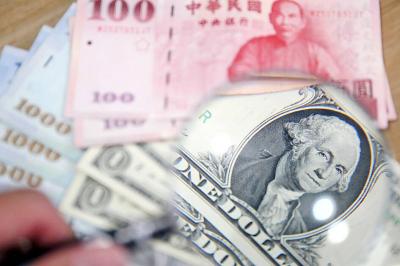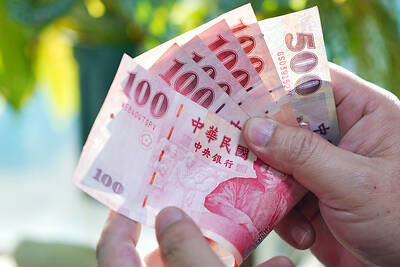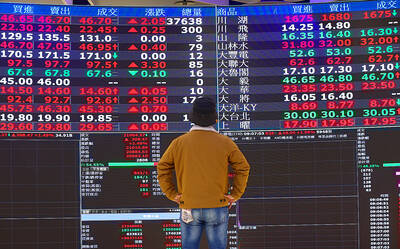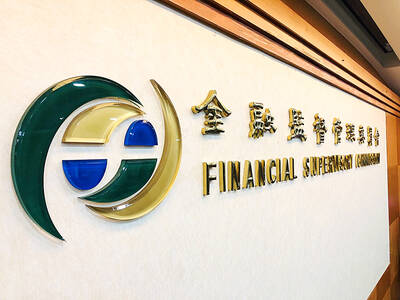Gold prices topped US$2,500 an ounce for the first time, bolstered by hopes the US Federal Reserve is edging closer to cutting interest rates.
Spot bullion climbed as much as 2.2 percent on Friday, exceeding the previous record set last month, as a disappointing reading on the US housing market reinforced expectations of fast and deeper cuts by the Fed. Lower rates generally are positive for gold as it pays no interest.
Meanwhile, Goldman Sachs Group Inc economists lowered the probability of a US recession next year to 20 percent from 25 percent, citing the latest retail sales and jobless claims data.

Photo: Reuters
The precious metal is up more than 20 percent this year amid mounting optimism on monetary easing and large purchases by central banks. It also has seen increased demand as a haven asset due to rising geopolitical risks, including tensions in the Middle East and Russia’s war with Ukraine.
Bullion began shooting higher earlier in the year — surprising seasoned analysts and veterans as there was not always a clear macro catalyst to justify its price rally. It sustained those gains even as traders dialed back bets on the timing of rate cuts.
More recently, gold has ticked higher as US officials widely are expected to start lowering rates soon.
A slew of US data on recent activities has convinced markets that the US central bank is on the cusp of lowering borrowing costs from a more than two-decade high, with the metal’s conventional drivers returning to the fore.
There is debate around how deep the Fed might cut rates given recent economic readings gave conflicting signals on the state of the US economy.
Goldman economists said they have become “more confident” the Fed would cut interest rates by 25 basis points at their policy meeting next month, but added that “another downside jobs surprise on Sept. 6 could still trigger a 50-basis-point move.”
Gold investors are “typically more prone to think the Fed will be more aggressive on the monetary accommodation front,” TD Securities Inc global head of commodity strategy Bart Melek said.
Prices could rise further to US$2,700 in the coming quarters, as “the macro/monetary and central bank ducks are aligning in a row,” he added.
Speculators boosted their net-bullish bets on Comex gold futures to a near four-year high last week, US Commodity Futures Trading Commission data showed.
Meanwhile, gold holdings in exchange-traded funds have risen over the past few months following a couple of years of outflows, data compiled by Bloomberg showed.

The US dollar was trading at NT$29.7 at 10am today on the Taipei Foreign Exchange, as the New Taiwan dollar gained NT$1.364 from the previous close last week. The NT dollar continued to rise today, after surging 3.07 percent on Friday. After opening at NT$30.91, the NT dollar gained more than NT$1 in just 15 minutes, briefly passing the NT$30 mark. Before the US Department of the Treasury's semi-annual currency report came out, expectations that the NT dollar would keep rising were already building. The NT dollar on Friday closed at NT$31.064, up by NT$0.953 — a 3.07 percent single-day gain. Today,

‘SHORT TERM’: The local currency would likely remain strong in the near term, driven by anticipated US trade pressure, capital inflows and expectations of a US Fed rate cut The US dollar is expected to fall below NT$30 in the near term, as traders anticipate increased pressure from Washington for Taiwan to allow the New Taiwan dollar to appreciate, Cathay United Bank (國泰世華銀行) chief economist Lin Chi-chao (林啟超) said. Following a sharp drop in the greenback against the NT dollar on Friday, Lin told the Central News Agency that the local currency is likely to remain strong in the short term, driven in part by market psychology surrounding anticipated US policy pressure. On Friday, the US dollar fell NT$0.953, or 3.07 percent, closing at NT$31.064 — its lowest level since Jan.

The New Taiwan dollar and Taiwanese stocks surged on signs that trade tensions between the world’s top two economies might start easing and as US tech earnings boosted the outlook of the nation’s semiconductor exports. The NT dollar strengthened as much as 3.8 percent versus the US dollar to 30.815, the biggest intraday gain since January 2011, closing at NT$31.064. The benchmark TAIEX jumped 2.73 percent to outperform the region’s equity gauges. Outlook for global trade improved after China said it is assessing possible trade talks with the US, providing a boost for the nation’s currency and shares. As the NT dollar

The Financial Supervisory Commission (FSC) yesterday met with some of the nation’s largest insurance companies as a skyrocketing New Taiwan dollar piles pressure on their hundreds of billions of dollars in US bond investments. The commission has asked some life insurance firms, among the biggest Asian holders of US debt, to discuss how the rapidly strengthening NT dollar has impacted their operations, people familiar with the matter said. The meeting took place as the NT dollar jumped as much as 5 percent yesterday, its biggest intraday gain in more than three decades. The local currency surged as exporters rushed to